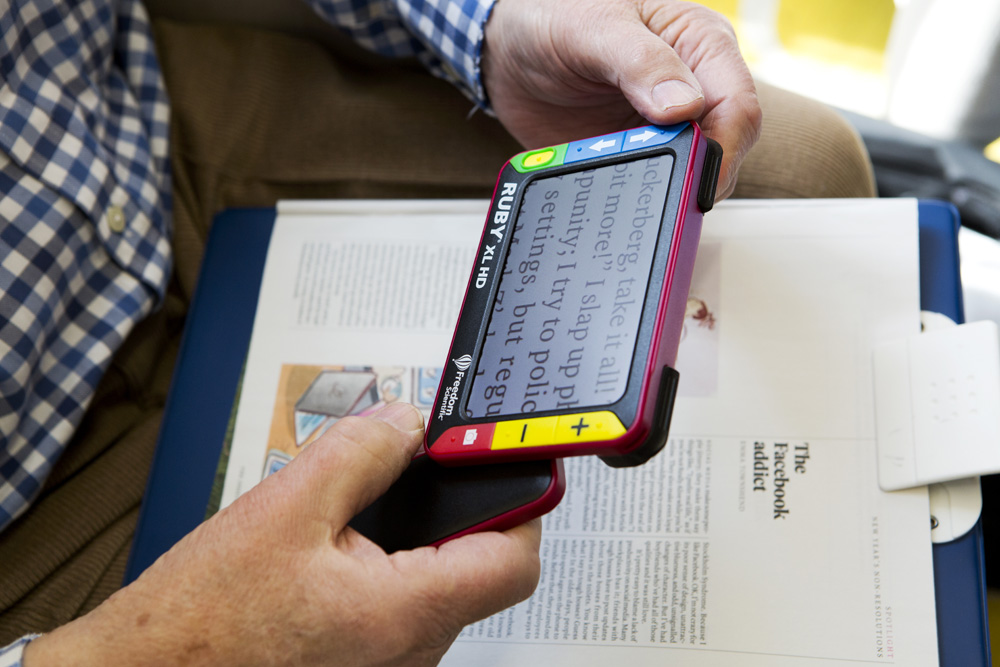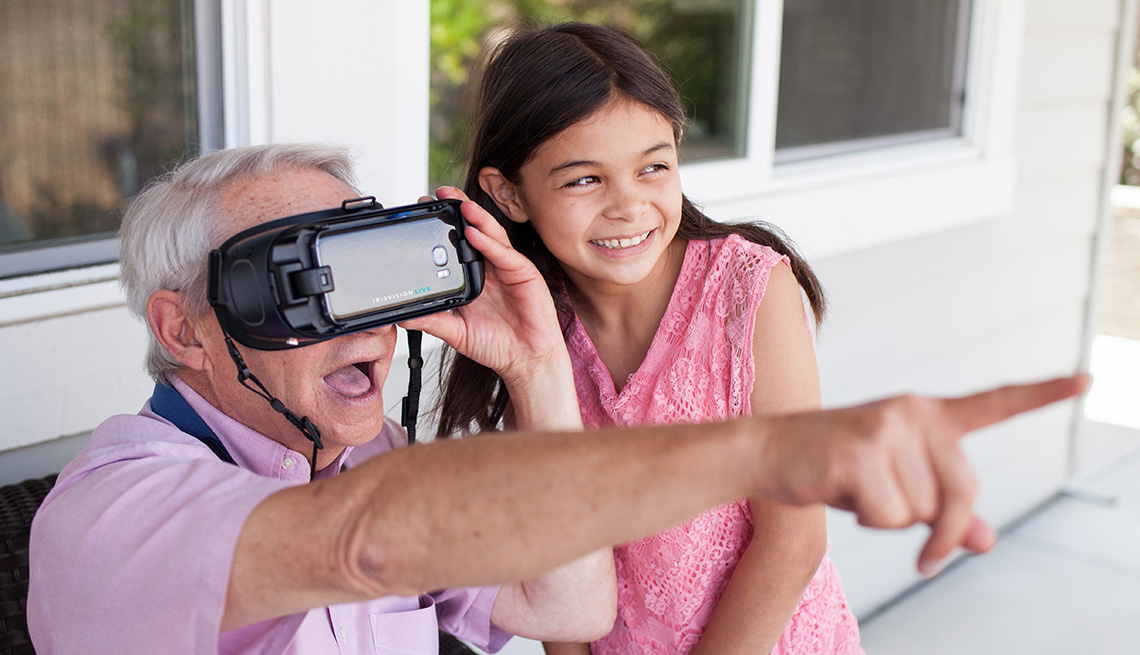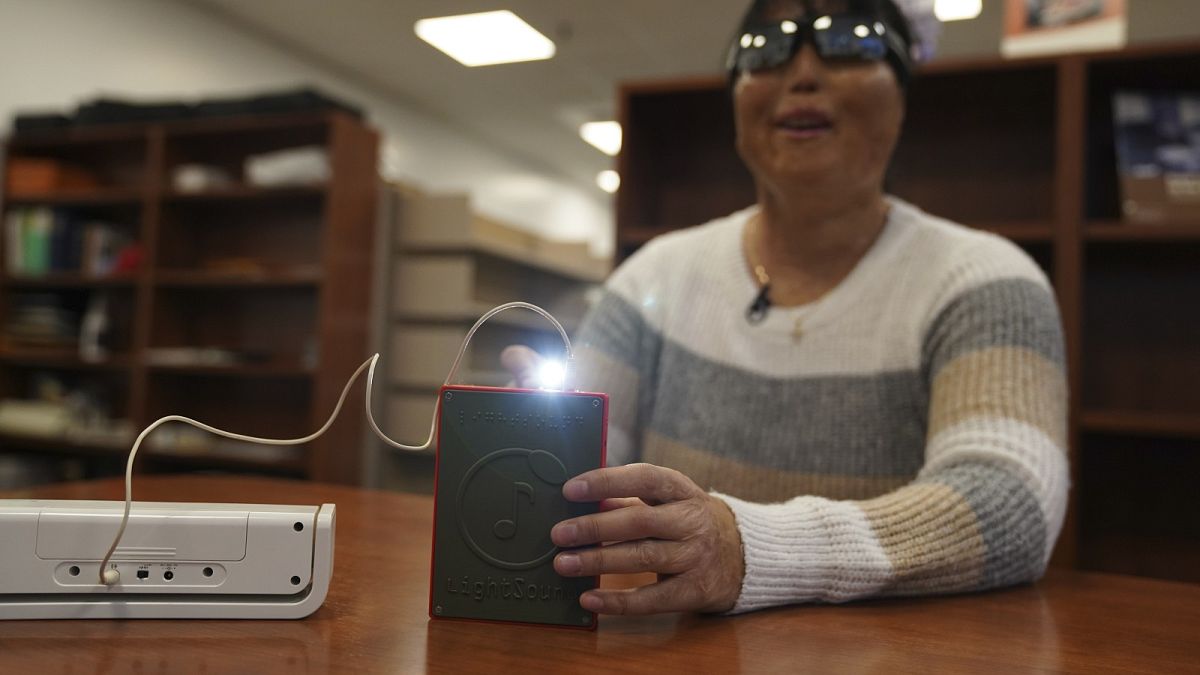Discover Ingenious Devices Created for the Aesthetically Impaired
The development of ingenious devices for the aesthetically damaged represents a significant innovation in ease of access and freedom. Technologies such as wise glasses with AI capacities and mobile applications developed to provide auditory summaries are improving everyday experiences for users. Furthermore, wearable devices that employ haptic comments enhance environmental understanding, while modern-day Braille technologies use brand-new methods to engage with text. As these devices continue to evolve, their influence on the lives of those with visual disabilities raises important questions regarding the future of inclusivity and autonomy in numerous elements of life. What exists ahead in this technological landscape?
Smart Glasses for Navigating

Smart glasses created for navigating are reinventing the method visually damaged individuals interact with their setting. These advanced gadgets utilize a combination of video camera technology, man-made knowledge, and acoustic responses to give real-time info about surroundings. By using obstacle discovery systems, smart glasses can alert users to possible threats, allowing safer movement in both unknown and familiar settings.
The assimilation of GPS technology additionally enhances navigating capacities, allowing customers to obtain auditory instructions as they move. This hands-free strategy not only promotes freedom however also equips aesthetically impaired individuals to navigate metropolitan landscapes with raised confidence. In addition, several clever glasses are outfitted with features that determine spots and street indications, giving contextual information that improves the customer experience.
Furthermore, the growth of these devices is consistently advancing, with companies functioning to enhance the precision of things recognition and increase the variety of navigational features. As clever glasses come to be more easily accessible and inexpensive, they hold the prospective to significantly transform day-to-day live for visually damaged individuals. Eventually, these cutting-edge tools represent an important step towards inclusivity, offering enhanced movement and a greater feeling of freedom for individuals browsing the globe around them.

Mobile Apps for Daily Living
Just how can mobile applications boost the every day lives of visually impaired people? Mobile applications are transforming the way visually damaged individuals browse their settings, manage everyday jobs, and accessibility information. These applications offer necessary support through various performances, promoting independence and enhancing lifestyle.
Several innovative mobile apps are designed specifically for day-to-day living. Apps like Be My Eyes connect aesthetically damaged individuals with sighted volunteers through video phone calls, enabling them to get real-time aid with tasks such as checking out tags or navigating strange spaces. In A Similar Way, Seeing AI, developed by Microsoft, utilizes expert system to define environments, reviewed message, and recognize things, properly changing a mobile phone right into a powerful tool for everyday assistance.
Additionally, navigating apps tailored for the aesthetically impaired, such as Aira and BlindSquare, provide audio-based instructions and environmental details, enabling individuals to traverse their environments safely and confidently. Past navigation and instant support, mobile apps additionally support company and job management, with features that aid users set pointers, develop order of business, and track consultations. In summary, mobile applications function as crucial resources, encouraging visually damaged individuals to lead even more independent and meeting lives.
Wearable Technologies for Assistance
Empowerment with modern technology is significantly evident in the realm of wearable tools made to help aesthetically damaged people. These ingenious devices incorporate seamlessly into day-to-day live, enhancing navigation and giving important responses to users. As an example, clever glasses geared up with cameras can recognize faces and read text aloud, enabling customers to interact even more with confidence in social and expert settings.
One extra large glasses frames more noteworthy development is using haptic comments systems in wearable devices. These systems make use of vibrations or other tactile signals to communicate info about the user's atmosphere, such as obstacles or modifications in surface, boosting flexibility and safety and security. Wearable technologies additionally consist of wristbands that attach to smart devices, signaling users to notifications via refined vibrations, thus enhancing connection without reliance on visual hints.
As these modern technologies remain to develop, they are not only enhancing freedom for visually damaged people however likewise promoting a better sense of incorporation in society. By linking the gap between challenges dealt with in daily living and the possibility for freedom, wearable modern technologies function as critical tools in the quest for equal rights and empowerment for those with visual impairments.
Audio Summary Devices
Audio description devices play a vital role in improving access for visually damaged individuals, offering them with the capability to involve with aesthetic media. Speech-to-text devices for low vision. These tools use narrated descriptions of essential visual aspects in movies, tv programs, and live efficiencies, making certain that individuals can fully understand the context and emotions shared with visuals
Sound description can be incorporated into different systems, including streaming solutions, movie theater screenings, and live movie theater. Several popular streaming services now include audio description as an availability feature, enabling audiences to choose it conveniently. In addition to conventional media, specialized apps likewise exist, supplying audio descriptions for art events, museums, and various other social events.
The efficiency of audio summary rests on the ability of the storytellers, who have to communicate visual details succinctly without detracting from the original sound. Technologies in this area are additionally leading the means for even more tailored experiences, where customers can change the level of detail and pacing according to their preferences.
Braille Innovations and Instruments
Braille gadgets additional resources and advancements have actually significantly transformed the means visually impaired people connect with message and information. Modern developments have led to the growth of flexible devices that improve literacy and freedom amongst users.
In addition, portable Braille notetakers combine typical Braille input with contemporary capabilities, assisting in note-taking, organizing, and paper modifying on the go. Screen readers for the blind. These small gadgets commonly feature text-to-speech visit this site abilities, bridging the gap in between Braille and acoustic info
In enhancement, ingenious Braille printers have emerged, permitting users to generate Braille tags, records, and academic materials successfully. This availability promotes better involvement in educational and specialist environments, ultimately advertising inclusivity.
Moreover, research right into wise Braille technologies remains to broaden. Instruments that integrate synthetic knowledge are being checked out to supply real-time navigation support and contextual details, improving the user experience in varied setups. On the whole, these advancements show a dedication to equipping aesthetically damaged people through modern technology, guaranteeing they can quickly access and engage with the globe around them.

Conclusion
The advancement of innovative devices for the visually damaged dramatically enhances freedom and top quality of life. Smart glasses, mobile applications, wearable modern technologies, audio description tools, and Braille technologies jointly equip people by offering crucial navigating aid, environmental understanding, and enhanced analysis experiences. These technologies not only foster higher addition but likewise advertise freedom in daily tasks, eventually adding to an extra available and equitable society for aesthetically impaired individuals. Continued development in this area holds guarantee for more improvements.
As clever glasses become more available and inexpensive, they hold the prospective to significantly change daily life for visually damaged customers. Mobile applications are changing the way aesthetically impaired customers browse their environments, manage day-to-day jobs, and access information. Apps like Be My Eyes connect visually impaired users with sighted volunteers using video clip calls, allowing them to receive real-time aid with tasks such as checking out tags or navigating unfamiliar spaces.Furthermore, navigating applications tailored for the aesthetically damaged, such as Aira and BlindSquare, offer audio-based instructions and ecological details, allowing individuals to traverse their environments securely and with confidence.The improvement of cutting-edge devices for the aesthetically impaired significantly enhances independence and quality of life.